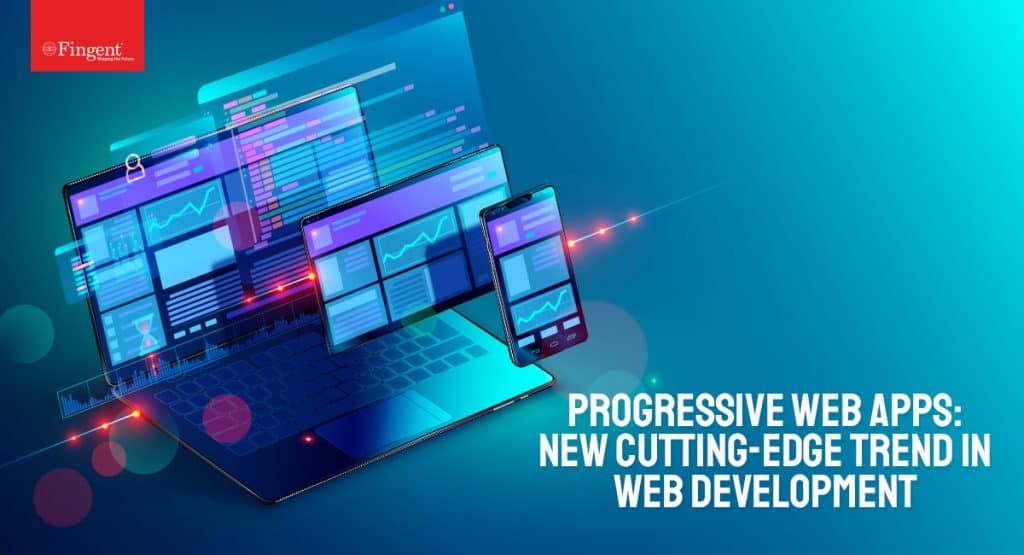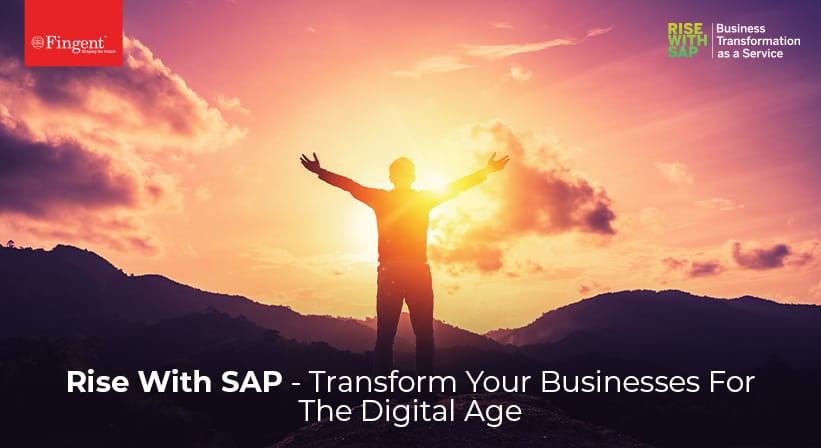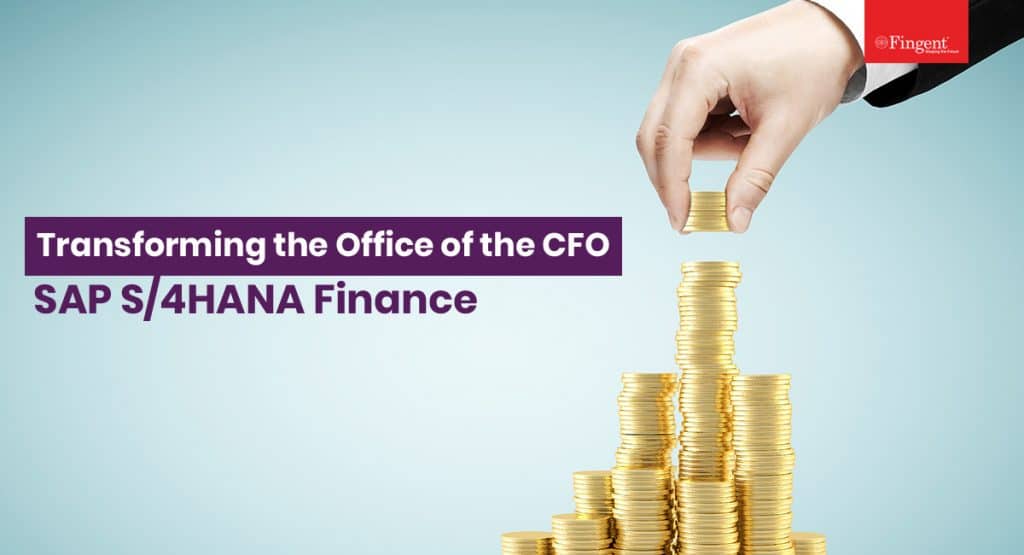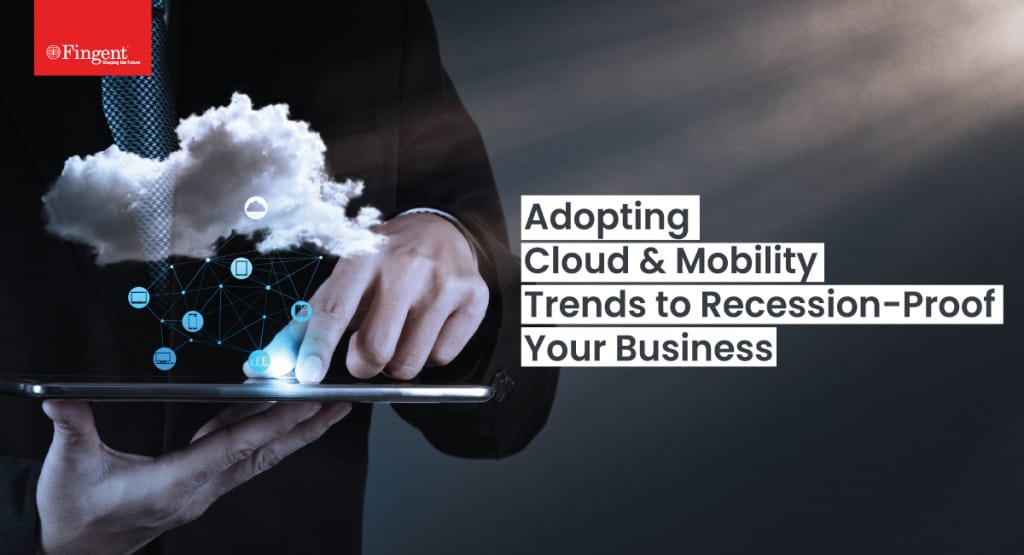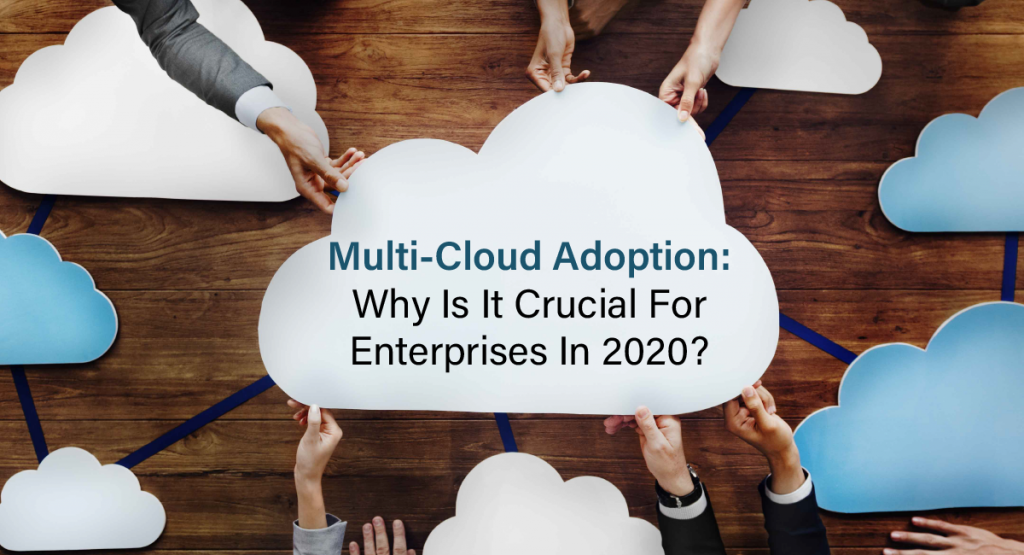Category: Business
“By failing to prepare, you are preparing to fail.” – Benjamin Franklin
Profound words that underline the importance of business planning. Business planning is the right strategy to ensure business productivity. With business getting more complex and planning tools filling up shelves, enterprises need a more straightforward way to manage business plans and improve sales. Only a few of the many products available have a holistic end-to-end approach to information analytics services.
SAP Analytics Cloud is a distinct analytics tool. It integrates analytics throughout the business process and across every level of an organization. It is an impeccable and compatible solution for enterprises that are involved in sectors like manufacturing, finance, and sales. This is an effective cloud-based tool that can analyze the data irrespective of the size of your firm. Plus, it allows you to transform this data into charts, tables, graphs, and more.
This article will help you determine how SAP Analytics Cloud enables enterprises to improve business planning. Read on to check out the features that will let you boost your business and help you stay competitive.
Top Two Features Of SAP Analytics Cloud For Effective Enterprise Planning
SAP Analytics Cloud is the first and the only tool in business intelligence that caters to all aspects of the business. It assists you in organizing and managing your data visualization, business planning, and predictive analysis.
Here are the SAP Analytics Cloud core planning features:
1. Augmented Analytics
Augmented analytics capabilities can help existing AI-powered analytics to offer business insights in real-time. You can add these capabilities to business planning and workflows. This contains an enhanced ‘Search to Insight’ capability allowing users to ask questions about data in natural language. Further, it can automate insights that include values and simulations.
The ‘Smart Predict’ feature can help train models to predict future outcomes without manual intervention. This enhances user experience allowing business analysts to predict future outcomes more accurately and automate decisions, preventing time lapse. Ultimately, SAP Analytics Cloud smoothens the process and improves business management.
Read more: SAP Analytics Cloud: Creating Dynamic Visual Stories
2. Enterprise planning
Collaborative enterprise planning ensures one version of the truth across the enterprise. Thus, it brings users together to align with the plan leading to better business outcomes.
The zero-based budgeting feature helps allocation of resources efficiently. The embedded collaboration tools ensure that every member of the finance team is aware of relevant information while they discuss finance issues. Plus, all the relevant budget templates are recorded and saved for the quick action and enhanced productivity.
SAP Analytics Cloud allows its users to analyze, plan and predict at one location. This can speed up planning cycles and help make informed decisions. Built-in features such as financial modeling, automated reporting enable enterprises to make better end-to-end planning decisions.
Planning and consolidation applications allow businesses to connect complex planning processes to the cloud. Thus, enterprises can create business plans and adjust them within the SAP Analytics Cloud. This allows enterprises to extend and align their plans across the organization leading to better outcomes.
Read more: Business Intelligence in SAP: How It Helps You Become a Data-driven Organization
Features That Improve Agility In The Enterprise Planning
1. Data and data visualization
Data visualization represents your entire business process. It is this important to find all the possible ways of viewing and understanding the data at a glance. This is where SAP Analytics Cloud can help. It can help make your data highly visible. These analytics offer quick answers to critical questions that can improve your business decisions.
Businesses need to gather enormous amounts of data each day from all their departments and other sources in sales. The next challenge is storing all this data in a secure place. SAP Analytics Cloud is the perfect place to store your data as it is most secure and easily accessible to all relevant people in your organization.
Read more: 7 Crucial Business Challenges Solved by SAP Analytics Cloud
2. Models
You do not need technical expertise to create a model from unrelated data sets of your company. It is quite similar to adding data to a story. Depending on the type of data, your models can either be simple or complex.
In any case, models help you organize present your data so that you can gain insights into your business. The models in SAP Analytics Cloud organize and present the data in rows and columns. This offers a unique, clear view of your data that is ready for analysis.
3. Stories
Stories occur in two phases: data view and pages. These two capabilities can enable you to gather data and connect it to create a model. This model is refined when you add data to make a story. These stories can empower you to make quality decisions for the success of your business.
What Are The Benefits Of SAP Analytics Cloud?
SAP Analytics Cloud offers many benefits for enterprises that are on the SAP. Here are a few:
1. Access data on the fly
SAP Analytics Cloud can be integrated to work both on Android and iOS devices alike. It allows your users to manage all their business activities even on a small screen from anywhere, at any time.
In today’s fast-moving world, your finance team needs the ability to create viable forecasts at a moment’s notice. Using SAP Analytics Cloud will enable your business process to remain proactive, not reactive.
2. Real-time insights
SAP Analytics Cloud functionalities allow all relevant users to generate instant insights to enhance decision-making and improve business outcomes.
3. No more silos
SAP Analytics Cloud allows for integrated planning across your organization. This means you can rest assured that all those involved in the decision-making process have the whole picture, not just a small part.
4. Customized dashboard
Enterprises are always on the lookout to improve data visualization, which helps in having a better interface for successful operations. Thankfully, SAP Analytics Cloud allows its users to customize their dashboards to help them navigate through the system and offer a personalized look. This way, business owners have relevant data on their interface just the way they like it.
5. Increased efficiency
SAP Analytics Cloud facilitates easy collaboration across your organization. This allows for quicker approvals, contributions, and comments. Plus, automation and ML helps in creating plans that are more productive, leading to faster results.
6. Minimize errors
Integrating SAP Analytics Cloud with SAP S/4HANA will allow the enterprises to minimize or eliminate errors that occur while making changes on multiple files on the cloud. You can make changes without manual intervention in the source system.
Read more: SAP S/4HANA Journey: 8 Ways C-level Leaders & Executives Can Derive Business Value
Power Charge Your Business
SAP Analytics Cloud is unique. It offers businesses real-time data to manage their resources effectively. Their tools keep getting newer updates to make it more reliable. As an SAP Silver Partner, Fingent has the expertise necessary to help you make the best use of this power-packed tool. Let us discuss your business and see how SAP Analytics Cloud can help you. Call us.
Stay up to date on what's new

Featured Blogs
Stay up to date on
what's new



Talk To Our Experts
Technology is getting better and better each day. Several technologies and architectural patterns have emerged and evolved during the past few years, and it only gets better with time. Microservices architecture or microservices is one of those patterns. It emerged from the world of domain-driven design and persistence.
In this article we will cover:
- What is microservices architecture?
- The difference between microservices, monolithic architecture, and service-oriented architecture (SOA)
- The benefits and examples of implementing Microservices Architecture.
What Is Microservices Architecture?
Microservices architecture is a specific method of designing software systems that can structure a single application as a collection of loosely coupled services.
Microservices architecture is made up of several components in their own individual compartments in the software. This makes them independently upgradeable or replaceable.
Microservices architecture simplifies the process of building and maintaining certain types of applications by breaking them down into many smaller pieces that work together. Though this increases the complexity, it offers greater advantages over the monolithic structure.
Now you may wonder: Isn’t Microservices just another name for monolithic architecture and service-oriented architecture (SOA)?
Let’s clarify that for you!
Read more: Progressive Web App Development: 10 Benefits
Microservices Architecture Vs. Monolithic Architecture
In the current age of Kubernetes, Monolithic architecture faces many limitations. Please note a few:
- Monolithic architecture is a single application. It is generally released once a year with the newest updates. Whereas, Microservices architecture is cloud-based and can be updated as required.
- Monolithic architecture is slow. Modifying a small section may require complete rebuilding and deployment of the software. Microservices on the other hand are faster to deploy and quick to isolate any defects.
- Monolithic architecture is harder to adapt to the specific or changing product lines while individual models of Microservices architecture enable scaling and development.
Microservices Architecture Vs. SOA (Service-oriented Architecture)
Microservices architecture is distinct from SOA. Here are a few differences:
- SOA model is dependent on ESBs and so it is slower. Whereas, microservices is faster as it leverages faster-messaging mechanisms.
- SOA focuses on imperative programming style, while microservices focuses on a responsive-actor programming style.
- SOA has an outsized relational database. But Microservices architecture tends to use NoSQL or micro-SQL databases.
Read more: Ways To Accelerate Business Growth and Success in 2021
Business Benefits Of Microservice Architecture
Microservices architecture can help your business grow quicker, increase productivity, and innovate better to deploy competitive products into the market. Here are some specific benefits of the Microservices architecture:
1. Better organization for efficiency
Microservices architecture organizes business applications. It can extend those applications to support plugins for new features, devices, etc. You can easily add more features to each of those popular applications to generate more revenue.
2. Increased scalability
Microservices architecture divides applications into smaller modules. Each of these modules can operate independently enabling businesses to scale applications up or down, as required. As these modules operate independently, a fault in the single module does not mean disruption of the entire system.
If one module fails due to outdated technology or the inability to further develop the code, developers can use another module. In other words, the applications continue to function even when one or more modules fail.
This capability allows developers the freedom to build and deploy services as needed without having to wait for the entire application to be corrected.
3. Easy to maintain
It is easier to maintain and test a single module as opposed to an entire system. Since each module has its own storage and database, organizations can build, test, and deploy all the modules with less complexity.
4. Faster development
Since all modules are loosely coupled, change in one module does not affect the performance of the other. This means you can update a single module at a time leading to faster development.
5. Enhanced performance
Microservices architecture can enhance the performance of the application. It reduces downtime while developers take their time to troubleshoot the issue and bring the system back to normalcy.
6. Dynamic yet consistent
The individual modular approach in Microservices architecture is easy to replicate. This allows for consistency in applications, which in turn makes managing these modules simple and easy.
Prominent Examples of Successful Microservices Implementation
Prominent examples of Microservices architecture are Amazon, Netflix, Uber, and Etsy. Over time these enterprises refactored their monolithic applications into Microservices-based architectures. This move has helped to quickly achieve scaling advantages, greater business agility, and unimaginable ROIs.
1. Amazon
In the early 2000s, untangling dependencies was a complicated process for Amazon developers. It faced development delays, coding challenges, and service interdependencies.
However, Amazon assigned ownership to each independent service team. This allowed the developers to identify the bottlenecks and resolve issues more efficiently. Also, it helped them create a very highly decoupled architecture.
2. Netflix
Within a year of starting its movie-streaming service, Netflix was suffering from service outages and scaling challenges. It experienced major database corruption and was on standstill for three days! That is when it decided to move towards more reliable, horizontally scalable systems in the cloud.
First, Netflix moved its movie-coding platform to cloud servers as an independent microservice. This allowed Netflix to overcome its scaling challenges and service outages.
3. Uber
Uber, the ride-sharing service faced growth hurdles. It struggled to launch new features, fix bugs, and integrate its global operations. Besides, it became increasingly difficult to make minor updates and changes to the system.
Uber then decided to move to cloud-based microservices. This allowed its developers to build individual functions like trip management or passenger management. This boosted the speed, quality, and manageability of their services. Among other things, they achieved more reliable fault tolerance.
4. Etsy
Etsy experienced poor server processing time. However, with the help of Microservices architecture, Etsy created a variety of developer-friendly tools and went live in 2016. From that point forward, Etsy benefits from a structure that supports continual innovation, faster upgrades, and more.
Read more: Enterprise Resource Planning Software: A Complete Guide!
How Fingent Can Help You Implement Microservices Architecture
Microservices architecture supersedes SOA and monolithic models. However, it has its challenges. This is where Fingent comes to your assistance.
Fingent can help you implement Microservices Architecture correctly to improve your productivity and ROI. Designing your architecture is not just a technological option. It is a necessity! It is a business decision that can directly affect your business growth. Fingent can help you take care of the technical aspect while you concentrate on your business goals. Give us a call and let’s get talking.
Stay up to date on what's new

Featured Blogs
Stay up to date on
what's new



Talk To Our Experts
In the current circumstances where industries are experiencing periods of intense change, organizations need a new paradigm. They need a product that must be capable of reframing the problems which were addressed by previous solutions or that targets a new set of problems. They also need a partner who can effectively deploy the solution and provide assistance whenever there is a need. SAP created a solution that addresses a set of existing problems through the method of reframing them, thereby presenting a novel way of addressing these issues in the form of BTaaS-Rise with SAP. Rise with SAP helps enterprises gain digital efficiency and flexibility.
Do you feel this pathway to intelligence is formidable and elusive? If so, rest assured that we, at Fingent, understand the challenge you face. This blog will help you understand what the benefits of the initiative are, how we approach it, and how we can help you deploy these services.
What is BTaaS-Rise with SAP
BTaaS (Business Transformation as a service) Rise with SAP is a suite of services and products. It is designed to accelerate the transformation into creating an intelligent enterprise. It is a direct response to the challenges in the steady acceleration of change in all areas of business.
As BTaaS, Rise with SAP can help businesses remain resilient and adapt to digital transformation quickly despite cutthroat competition in their respective industries. It offers these five components to build an Intelligent Enterprise:
- Technical Migration tools and services
- S/4 HANA cloud
- SAP business technology platform
- Business process intelligence
- SAP business network starter pack
Read more: Ensure Business Continuity with SAP S/4HANA Selective Data Transition Approach
How Can Your Business Benefit from Rise with SAP?
Rise with SAP allows you to be in control. You can choose where to begin your journey and you can design a suitable strategy that fits your business.
Let us now examine the twofold benefit of Rise with SAP:
Value from differentiating business capabilities and outcomes
This value has a significant impact on shareholder returns. This impact ensures long-term sustainability with purpose. Here are the top three benefits for your business:
- Top line: This includes your strategy, employees, and your products. You can improve your top line by innovating and establishing new revenue streams and business processes.
- Bottom line: You can improve operational efficiencies by eliminating repetitive tasks. You can save time and resources by allowing intelligent ERP to function as a co-pilot providing you with suggestions based on business process patterns and employee behavior.
- Green line: Rise with SAP will help you understand, monitor, and optimize environmental and social impact throughout the value chain. This will help minimize wastage, improve safety, build supplier compliance, and attain resiliency.
Value-driven from cloud delivery capabilities
This is essentially the incremental value. It allows enterprises to maximize value, minimize transformation risk, and reduce cost to the extent possible. Explore the top three benefits for your business:
- Facilitates process excellence: Using process discovery reports, migration tools, and services and other capabilities your enterprise becomes transformation ready.
- Improved service experience: Rise with SAP is a Business Transformation as a service; a simpler support model. Thus, you have the benefit of an improved service experience.
- Operational resiliency: You can hyperscale infrastructure with inbuilt full-stack security.
- Lower TCO: It allows you to use flexible user-based subscriptions and leverage hyperscale economics to lower TCO.
But what do you need to gain these capabilities? Well, you need these three things:
- Technology that can support your company processes
- A cloud provider
- A capable and efficient partner who can help you take greater advantage of Rise with SAP
Read more: It’s Time To Transform Your Business For The New Digital Age – Rise With SAP
Role Of Fingent in Leveraging These Services
Fingent is geared to work with enterprises under the framework of Rise with SAP. As SAP’s Silver Partner, we have a credible background in helping enterprises uncover business inefficiencies and redesign their processes to fit their needs. With deep domain expertise, we help them align and achieve organizational goals at optimal costs.
We understand the difficulties some organizations face in making decisions with regard to business transformation. Our program is designed precisely for such organizations. As a trusted Silver Partner, Fingent is here to guide you through every step of this exercise.
We start by developing a deep understanding of your business and your objectives. We then use our expertise in SAP to devise a strategy for a comprehensive business transformation strategy. As a seasoned SAP Silver Partner, Fingent combines its expertise with a deep understanding of user experience to maximize your operational efficiency.
Our approach can analyze complexities around your business processes and adopt a user-first approach. This can drive a successful implementation of Rise with SAP that leads to increased user adoption.
As suggested by Rise with SAP program, our engagement starts with a process and system audit. This will form the backbone for subsequent phases of the transformation process. Fingent will be with you at every step. We work with your business leadership, key stakeholders. We involve key influences to ensure the successful completion of your business transformation.
Read more: How Fingent Helps CFOs Gain New Insights and Reliably Enable Key Decisions
We Can Help Your Business RISE!
Rise with SAP is another possibility for us to empower clients with the help of the SAP portfolio. In close coordination with SAP, we create tailor-made solutions that increase the value of this initiative for you.
To do this, we combine SAP capabilities with products and services that we have developed ourselves to individualize for your specific needs. This is how we at Fingent ensure that you receive a truly customized solution – one that addresses specific challenges in your specific environment. This will generate the best possible value for your business.
You can rely on us as your sole contractual partner and thus avoid needless complexities. We offer everything from advisory services to application management. All this can be done at your own pace, with your budget, and according to your business needs.
We can smoothen the path of transformation for our existing customers. For our new customers, we can leverage the full potential of Rise with SAP and customize it for your advantage.
Talk to our experts at Fingent and together we will find ways to make the best out of Rise with SAP for you!
Stay up to date on what's new

Featured Blogs
Stay up to date on
what's new



Talk To Our Experts
Everyone in the manufacturing world faces the fear of going bust if they do not adopt digital transformation. That is a given and yet we can all agree that digital transformation doesn’t happen overnight.
Currently, enterprises encounter several challenges on their digital transformation journey. One among them is to learn to create and use data through a product life cycle that creates flexible manufacturing processes. Such processes can respond instantly to changes in demand at a low cost to the firm without damage to the environment.
Are you a manufacturer with global aspirations? Do you need to accelerate lead times and product customization? If so, then you may encounter these common business challenges:
- Need for critical infrastructure in remote locations.
- Need for tailored and full-custom design with high quality and ruggedness that fit your specific requirements.
- Need for a simplified supply chain that enables you to get to market quicker and realize faster time to revenue.
- Need to maximize efficiency in the supply chain and ultimately reduce lead time.
- Need to ensure product longevity by providing the same time-zone technical support. And to provide personal support services with the ability to decrease lead times.
Technologies such as 5G, edge computing, and cloud have been pushed further into the limelight especially over the past year, in the wake of the pandemic. As enterprises react to the changing world, these technologies are now emerging at the forefront as a necessary component of network infrastructure.
Read more: Take a Look at How 5G is Reinventing the Way We Work
How Do 5G, Cloud, And Edge Computing Unlock Enterprise Opportunities?
5G, cloud, and edge computing have become major areas of interest and investment at the enterprise level. They provide real-time insights, analytics, and business benefits that can be used once mission-critical latency issues are resolved.
5G, Edge Compute, and Cloud technologies are an emerging set of solutions. When orchestrated together these can enable a spectrum of benefits that are contingent on industry, maturity, and technology. These are complementary technologies that work together for most use cases.
What unlocks the enterprise opportunities is to marry new and existing technologies to create machinery that is as proactive and predictive as the best workers. Edge computing, cloud, and 5G connectivity can be combined to supercharge real-time decision-making and improve quality assurance throughout the supply line.
How would you like it if you can predict the future? Or if you could see the possible problems and correct them before they happen? 5G, edge computing, and cloud promise to give you that ability! These technologies are in a symbiotic relationship.
Cloud contains unlimited resources. Powered by 5G, AI models can continuously update and adapt to situations within the enterprise. This virtuous feedback loop delivers real-time results. Plus, it delivers ongoing improvements over time, as the entire system across the enterprise learns and improves from prior experiences.
This can greatly improve the productivity of your employees. Also, it can save costs tremendously as it can reduce downtime. Here are some specific ways in which 5G, edge computing, and the cloud can benefit the industry.
Read more: How 5G Will Boost Enterprise Investment In Cloud
Cloud For Responsive Resilience
In the past when enterprises needed to deploy applications using their equipment, they had to ensure that their server, memory, and processing power were equipped to run the application efficiently. Any misjudgment could have a cascading effect throughout the enterprise. However, the cloud provides infinite opportunities.
What enterprise opportunities does this provide? It provides what all enterprises need more than ever: increased speed, resilience, and flexibility.
Bringing cloud intelligence to their IT networks can be very beneficial in performing preventive maintenance, making decisions in real-time, and keeping data more secure. It allows for automated decision-making while saving bandwidth costs.
By leveraging cloud capabilities, enterprises can reduce overall costs. They can benefit from automated one-click deployment and realize higher value from data. This contributes to resilience. Resilience is more important to enterprises that are struggling during major disruptions like the pandemic.
Read more: Why It’s Time to Embrace Cloud and Mobility Trends To Recession-Proof Your Business?
5G Can Help Process Information Across The Enterprise
5G technology enables enterprise connectivity, remains powerful, and is constantly updated. 5G enables all the machines and modules to function at the same speed, reliability, and security as we expect from our phones. In other words, it prevents loss of time due to hanging or buffering associated with the mobile networks.
5G will deliver multiple benefits to those who adopt it:
- Provides ultra-reliability and security. It is far more efficient than any wireless mechanism.
- Since 5G eliminates the need for wired connectivity, it enables a high-speed environment with higher flexibility and lower latency.
- Provides the ability to handle mass customization and personalization.
- 5G augments IoT capacity to support device density and data volume
- Improves productivity as it reduces failure rates.
Read more: Top Business Drivers that Boost Legacy Cloud Migration
Edge Computing Can Help Deploy Technology With Unhindered Network Performance
Edge computing can reduce pressure on data centers and service provider networks. Plus, it preserves bandwidth and brings real-time processing close to users and their devices. Here are specific ways in which edge computing can prove advantageous:
- Maintain competitive edge: Edge computing can provide the ability to use data from various machines, processes, and systems to adapt the manufacturing processes in real-time. It can support precision monitoring of the production line. This enables swift operational responsiveness to unforeseen events. Additionally, it can gather data from connected systems and devices in real-time. Hence, manufactures can now analyze data at the point of creation leading to faster and more informed decision-making within the enterprise.
- Helps seize the opportunities that data and performance-intensive technologies present: Edge computing can empower employees and streamline workflows. It can enable smarter supply chains and improve employee safety and productivity.
- Documents at fingertips: Edge computing can provide workers easy access to documents, new workflow instructions, real-time videos and images, and new product updates. This can increase greater efficiency despite social distancing protocols in the current scenario.
Gain a Competitive Edge with Next-Gen Technologies
With IoT deployment on the rise, enterprises are increasingly adopting 5G, cloud, and edge computing. These technologies provide a competitive advantage by reducing unexpected downtime issues. Hence, the enterprises enjoy improved overall efficiency.
The convergence of these technologies can increase agility and resilience. These technologies can be leveraged to establish enhanced productivity, customer satisfaction, and increased ROI. Hence, 5G, cloud, and edge computing technologies must form an important part of any post-pandemic strategies. You must be eager to get started on gaining that competitive edge. Let’s get talking and make that happen!
Stay up to date on what's new

Featured Blogs
Stay up to date on
what's new



Talk To Our Experts
Businesses today need a reliable, effective, and user-friendly support system to tackle the rapidly evolving market changes. Odoo ERP offers features and easy-to-use models that enable businesses to simplify their processes, reduce costs and improve efficiency. It also offers free and paid versions with an outstanding integrated system providing businesses with reasonable flexibility and scalability. With these and many other unique capabilities, Odoo ERP is turning into a hot topic amongst top companies today! With the release of Odoo 15, expectations have risen even more! Businesses are strategizing ways in which they can deploy the improved capabilities of Odoo 15 to enhance their business growth. This blog will take you through what’s new in Odoo 15 and how you can leverage these enhanced features for your business.
What is Odoo 15?
The all-new Odoo 15 is likely to launch in October 2021. It will be released in the Odoo Experience Meet which will be conducted virtually due to the COVID-19 pandemic prevalent in many parts of the world. Odoo 15 is expected to feature advanced tools that can help improve business performance and efficiency. Odoo 15 is believed to be the ultimate business solution with its latest web-based integration and superior architecture.
Read more: 5 signs which imply that your business needs Odoo ERP
A Look Into the Expected Features of Odoo 15
1. New import screen
Odoo 15 is expected to extend the experience with its new importing screen feature. This new import screen feature includes a menu to handle cash rounding making it seamless for accounting and generating the invoices.
This feature is expected to be available in all the required modules and functional tabs.
2. Capable options in Pivot and Graph views
Odoo ERP software provides data representation with Pivot and Graph views. The Odoo 15 version will most likely allow you to edit and adjust the graph using Odoo studio. With this, you can extend the representation of the data to valuable insights for improved decision-making and analysis.
3. New HTML Editor
Odoo 15 is expected to include an attractive new HTML editor. While it will be similar to text editors, it will include HTML codes. So, many developers are using it to extend productivity.
4. Coupon and Promotion Program in POS
While the previous versions of the Coupon and Promotions were exclusively for Sale and eCommerce websites, the Odoo 15 coupons is created to support both eCommerce as well as POS.
The feature will be available in the POS settings. While under the product menu you will have the option to create Coupons and Promotions based on your business needs for later use. The cashier can click on the Enter Code button from the POS and apply the Coupons for Point of Sale Order which will be reflected in the customer’s invoice.
Considering the previous trends of Odoo releases, Odoo 15 will have an enhanced user experience that is sure to blow your mind.
5. New command and command editor
Odoo 15 will include the new command and command editor. It will help handle invoices in accounting configuration.
Read more: How Odoo ERP Simplifies Sales Management in Your Organization
6. CRM
The new feature in the CRM is expected to improve managing leads and well assigning salespersons.
Using this feature, leaders can allocate the desired team members to activity or lead in the Odoo 15 CRM module. This will augment the organization’s sales activity and the team members’ collaboration for the leads.
7. Project burn down chart
This feature will be introduced in the Project section. Here, you will find an easy reporting tool to view the actual chart of the project’s progress phase-wise.
Additionally, the chart will help identify the current trend and any delay for the project deliverable.
8. Share buttons
The share functionality will be included in the customize section of the eCommerce website platform.
Typically, the share button allows the products to be shared on different social media platforms through the website portal. Using the new functionality, you can share the details on the platform to finalize the product.
9. Purchase dashboard
The purchase dashboard gives an amazing perspective for the dashboard comprising all the purchase values and graphs. The dashboard provides the needed information about the tax and untaxed-based total. A click on the reporting tab of the Odoo 15 dashboard will seamlessly get you a detailed report.
10. Website gift card
This option allows you to sell the card on eCommerce. This functionality creates unique codes for the sale of Gift Cards. These unique codes are given to the customers either via email or physically.
Odoo apps or modules help create multiple unique codes for the purchase of a gift card. Odoo 15 is likely to upgrade these features.
Additional features
In addition to the above-mentioned features, Odoo 15 is likely to incorporate these features as well.
- Business Intelligence Tools
- A newly designed eCommerce product page
- Formulas of BOM, %of final products, etc., to improve the process manufacturing.
Read more: Why Choose Fingent as Your Odoo ERP Partner
Conclusion
Odoo ERP implementation can help you manage your business seamlessly and with Odoo 15 you can enhance it further with customization. In general, Odoo 15 brings several opportunities to users and developers and helps them explore better opportunities.
At Fingent, we constantly indulge in building innovative modules for Odoo and other ERP platforms. The rising capabilities of Odoo are sure to unlock unique opportunities and we are preparing businesses to deploy the same.
If you think your business is ready to deploy the rising capabilities of Odoo, then connect with our experts today, and explore unlimited possibilities for your business!
Stay up to date on what's new

Featured Blogs
Stay up to date on
what's new



Talk To Our Experts
Digital transformation was already happening across every industry, but the pandemic has accelerated the pace. Unfortunately, while many organizations have embraced the reality of rapid change, some of the companies have been slow to adopt new technologies.
Looking specifically at cloud solutions, companies that migrate some or all of their digital assets to the cloud can achieve transformational results. It is helping companies to innovate faster, modernize outdated infrastructure, get better insights from their data, scale globally, and restructure the existing business models to create better customer experiences.
Cloud migration allows easy access to data and applications from anywhere, making business functions smoother and simple to operate. This blog will help you understand why you need cloud migration now and the drivers that boost legacy cloud migration.
Why should you consider migration to the cloud?
Cloud migration can improve the performance and competitiveness of your organization. Often, system performance is poor, and maintenance costs are high. Any incompatibility with new technologies can cause problems when altering these systems as they cannot keep up to date at the same speed at which your business needs to innovate and scale. Additionally, lack of vendor support and regular updates for old systems can compromise the data security, making application migration to the cloud imperative.
Read more: Cloud Migration Strategy: 7 Steps to Accomplish a Flawless Transition
Common challenges associated with cloud migration
Cloud migration can be complex and risky, and many organizations face challenges during the transition.
1. Poor strategy and planning
Many organizations migrate to the cloud without proper planning or a good strategy. For a successful cloud implementation, organizations must plan well. As every application and dataset has different requirements, they will need a different approach to cloud migration. So, enterprises must have a valid business case for every workload it migrates to the cloud.
2. Vendor lock-in
This is a common problem faced by organizations that adopt cloud technology. While cloud providers offer many services, these services sometimes cannot be extended to other cloud platforms. Many organizations that start using cloud services often find it difficult to switch providers if the existing provider does not suit their requirements.
3. Data security and compliance
Data security and compliance are major obstacles to cloud migration. Cloud services often use a shared responsibility model in which they take the responsibility of securing the infrastructure while the organization takes responsibility for security data and workloads. It means you are responsible for configuring the security measures correctly and ensuring that all services and applications have proper security controls.
4. Cost Management
Many companies don’t have clear KPIs to understand what they plan to spend or save after migration, making it difficult to know if the migration was successful from the cost point of view. Additionally, as the cloud environment is dynamic, the costs can change as new services are adopted, and application usage grows.
Read more: A Comprehensive Guide To Modern Cloud Application Development
What are the drivers that encourage cloud migration?
1. Hassle-free digital transformation
With recent advances in cloud computing, leaders can digitize their core functionalities such as SAP, CRM, data analytics, and more. From innovating to improving productivity to unlocking new sources of revenue, the cloud provides endless opportunities to enterprises that migrate away from legacy systems.
2. Accelerate growth
Whether it is organic expansion, mergers, or acquisitions, technology is accelerating organizational growth. Organizations leveraging the cloud can integrate new acquisitions seamlessly with the existing platforms and also scale rapidly using auto-scaling functionality and flexible data management services.
3. Better Security
Data security is turning significant. By migrating to the cloud, enterprises can update their IT infrastructure according to the latest practices and protect their applications from malicious hacking attempts.
While many leaders mistakenly think that the cloud itself makes an organization secure, in reality, it empowers groups to implement governance, strict security policies, and compliance guardrails needed for their operations.
4. Improve business agility
To stay ahead of your competitors, you must be agile. It means you need to have access to flexible and on-demand IT resources. With the cloud, over 99% of resources are available on-demand. Also, enterprises don’t have to wait endlessly for any hardware component and installation. They can lease valuable capabilities from their cloud providers and get to the market faster.
5. Reduce costs
Yet another reason for businesses to migrate to the cloud is to reduce IT costs. You can easily find the right-size resources in the cloud according to your business needs and cut unnecessary costs. Also, companies can adjust capacity needs whenever the need arises and eliminate unnecessary hardware.
6. Merge data centers
With cloud computing, companies do not have to manage their own on-premises data centers. Instead, they can outsource back-end responsibilities to their cloud providers and use their resources for higher-value activities. Additionally, companies can consolidate their operations and distribute cloud services whenever needed, improving efficiency.
7. Leverage modern technologies
Migrating to the cloud allows businesses to leverage new technologies. For example, companies can take advantage of AI and machine learning which are not feasible on-premises. They can also take advantage of complex cloud-native technologies such as Kubernetes containers and data lakes easily.
Read more: 6 Reasons Why The FinTech Industry Should Embrace Legacy Cloud Migration
Conclusion
To avail of the migration benefits, you must successfully move your on-premises IT infrastructure to the cloud. As a cloud expert, we help understand the challenges and help you make a smooth transition without disrupting your current operations.
At Fingent, we offer a single control plane for the performance and security products to ensure seamless legacy cloud migration. In addition, we enable easy integration with public, private, or hybrid cloud. So connect with our experts today, and know, how we can help you take your business to new heights with seamless cloud migrations.
Stay up to date on what's new

Featured Blogs
Stay up to date on
what's new



Talk To Our Experts
The pandemic has derailed the global economy, impacting businesses across the world. If organizations wish to keep up with the lightning pace of app and platform improvements while staying cyber secure, they must rely on DevOps. DevOps is crucial to business success more than ever.
But before you start your journey with DevOps let’s take a look at what DevOps is. What are the advantages of DevOps? How can you maximize its potential for your business? Read on to find out.
What Is DevOps?
DevOps is a term derived from combining “development” and “operations.” According to Gartner, “DevOps represents a change in IT culture, focusing on rapid IT service delivery through the adoption of agile, lean practices in the context of a system-oriented approach.”
In simple terms, it is a coordination of best practices that automate and integrate the processes between software development and the IT teams. This cross-disciplinary practice enables enterprises to create and improve products faster than traditional software development methods.
Implementing DevOps allows enterprises to have a competitive edge in value and value management. It allows teams to adapt to the changing market and address their customers’ needs effectively.
Read more: DevOps: The Catalyst to Efficient Project Development and Delivery
Tangible Benefits of DevOps
1. Maximizes efficiency
DevOps ensures the quality of application updates. Armed with the logging and monitoring mechanism of DevOps, developers can now oversee the real-time performance of the products.
This will help them make any necessary changes or improvements ensuring the efficiency of the software. Continuous testing enhances the software quality. Plus, it will be more reliable to function consistently and seamlessly.
2. Better communication and cooperation
A DevOps software development culture contributes to happier and more productive teams as its primary focus is on performance. This team spirit helps in building trust that leads to unitedly working to innovate more effectively.
When teams work together with DevOps, they do not wait for a different team to solve problems. Instead, they work toward a common goal focusing on bringing the product to market or production.
3. Faster Innovation
The success of an enterprise depends on its ability to innovate faster than its competitors. Since DevOps collaborates both development and operation efforts, the development cycle is shorter and the applications are ready faster.
4. Reduced implementation failure
Implementation failure can occur due to programming defects. Since DevOps promotes frequent code versions it is easy to detect defects early. This reduces the number of implementation failures. Additionally, recovery is much faster as the teams share ideas and together tackle the challenges of both teams.
5. Cost-effective
Automated testing and CI/CD aid in efficient bug-free codes. Hence, it eliminates the need to combat network downtime and avoid spending additional costs on other related issues.
DevOps automation accelerates the software release pipeline and cuts down on manual interventions. Thus, it minimizes software release costs. Moreover, early detection of defects saves consequent financial damages. Subsequently, DevOps increases profitability while reducing both direct and indirect costs.
Read more: Test Automation In DevOps For Expediting Software Development
6. Customer satisfaction
Customer satisfaction is crucial for businesses to thrive and profit. The constant flow of feedback mechanism of DevOps allows customers to rate the product and its updates. Their feedback will help developers to improve the product.
Besides, customers can keep tabs on the progress of the application with the help of loop feedback. This contributes to customer satisfaction as they now can see the agility in the software development process. As a result, your business can and will gain a competitive advantage in your sector.
Key Features Of DevOps
- Code: Everything in DevOps is version-controlled as code along with data.
- Continuous: Emphasis is on continuity of integration, deployment, and testing.
- Collaboration: Strong collaboration between the operations, development, and security teams is at the heart of DevOps.
- Fail fast: Robust automation, tooling, and processes in DevOps help in identifying problems faster preventing delays in the rollout of new features.
- Automated environment provisioning: This enables consistency across deployment ensuring reliable release.
- Security: This involves all security measures ranging from static security code analysis to vulnerability management.
DevOps Lifecycle
DevOps consists of multiple phases that collectively become the DevOps lifecycle. These phases ensure DevOps optimizes all development processes. Here is a phase-wise break-down of the DevOps lifecycle:
1. Continuous development
This is the first phase where planning and software coding takes place. The planning involves understanding the project and developers begin developing the code for the application. Though planning does not require any tools, maintaining code requires a number of tools.
2. Continuous integration
In the phase of continuous integration, new codes are built and integrated into the existing code. The source code is modified several times on a weekly or daily basis. The continuous integration of new code helps reflect the changes that the customers experience with the updated code.
3. Continuous testing
At this stage, the developed software is continuously tested for bugs with the help of automated tools. This phase can be repositioned around the continuous integration phase as well.
Testing helps developers save effort and time that is usually lost in manual testing. Plus, reports generated help them improve the test evaluation process. This ensures flawless functionality and inter-networking of the application.
4. Continuous feedback
Continuous feedback allows for further analysis of the improvements. The feedback from customers is assessed promptly enabling the developer to release new versions of the software application.
5. Continuous monitoring
This phase is of key importance for application developers as it sustains the availability of services in the application. Continuous monitoring helps determine the root causes of recurring system errors and helps resolve security issues and other problems.
6. Continuous deployment
Although continuous deployment takes place before continuous monitoring, developers ensure that this phase remains active throughout the DevOps lifecycle. Containerization tools are used to achieve continuous deployment. This nullifies all sorts of production failures and system errors.
7. Continuous operations
This is the shortest of all phases. The continuous operation allows developers to automate the process and accelerate the time-to-market for the application.
Use of DevOps in Different Industries
Manufacturing industries: The use of DevOps in car manufacturing can help manufacturers identify errors early on in the production process.
Online financial trading companies: DevOps reduces the overall process time and increases the customer base. DevOps contributes to a drastic reduction in regression testing time which in turn reduced the funding period.
Read more: Prepare for the Future of Digital Innovation with these 10 Services From Fingent
Get Faster, Bigger, and Better with DevOps
It is clear that the DevOps strategy benefits enterprise software development in many ways. DevOps take the legwork out of the software development process and has emerged to be a crucial component for the growth of a business. DevOps provides a wide range of benefits that are measurable and real in implementation.
DevOps can create an astounding long-term impact for internet-based businesses. All businesses need DevOps for faster testing and implementations.
If you are not adopting DevOps practices in your technology projects, then you are increasing the risk of delay on your technology projects and increasing technical debt. The longer you wait, the more effort is required to implement DevOps into your workflow. So, if you are considering implementing DevOps, act quickly! Call us today.
Stay up to date on what's new

Featured Blogs
Stay up to date on
what's new



Talk To Our Experts
The greatest business challenge of our time is the steady acceleration of change in all areas of trade. The pandemic has only accelerated these digital shifts. Transforming your business is necessary to stay relevant and competitive. The scale of digital challenges can be daunting to businesses. Understandably, some businesses may feel lost in the current digital maze. But, to stay agile and competitive, business leaders must strategically transform their business. Early this year, SAP announced a new service called “Rise with SAP.” This blog attempts to clarify what is included in Rise with SAP and how it can transform your business.
What is “Rise with SAP”?
Rise with SAP is a BTaaS (Business Transformation as a Service). The objective of this product is to accompany and accelerate business transformation step by step.
Rise with SAP is a single subscription contract. It provides access to a variety of tools and services that focus on assisting with your business transformation efforts. It is a new way to redesign processes for better business outcomes.
Rise with SAP can help your company to adapt business processes on your timeline and your terms. It helps them continuously unlock new ways of running businesses to stay ahead of the competition. It can speed up the otherwise sluggish adoption of SAP S/4HANA.
Read more: SAP S/4HANA: Redefining End-To-End Solution
How Is “Rise With SAP” Transforming Businesses?
Rise with SAP can holistically transform your business with a fast time to value, regardless of your starting point. Rise with SAP is like a moving company that provides a checklist, packers, containers, and services like replacing old appliances and installing new ones. It provides a blueprint that a company can implement on its own terms and at its own pace. What is the benefit? One contract and one responsible party for all services. It simplifies your journey in four simple steps.
Step 1: A business model redesign
This step helps businesses redesign and optimize business processes and implement the best practices in their verticals. In other words, it is a way to analyze how your business processes perform and obtain tailored recommendations.
A successful digital transformation project requires IT and business leaders to work together. This is why this analysis motivates all in your business to adapt to new business models.
Step 2: Alignment with customer journey
This is the key element of Rise with SAP. SAP realizes that each organization requires a unique path forward. Here are four starting points for digital transformation:
- Digitally grown startups and other innovators that need to scale with speed
- Companies that began their journey into the new world of modular ERP cloud applications are now ready to go further
- Organizations that have started digital transformation at the outer edges, now need to focus on their core
- Companies with a long heritage and history with a complex on-premises system
Realizing the fact that each of these starting points requires a unique path, Rise with SAP provides a highly customizable, subscription-based model.
Step 3: A technical migration
Rise with SAP includes technical services that ensure painless migration to a standard, modular, and flexible landscape. Such a flexible landscape with a consistent data layer enables businesses to react faster to ever-changing business demands.
This includes essential services from SAP and their partners. These services help eliminate modifications and custom code. Besides, it aids in harmonizing and governing a company’s data layer. Such accurate data will help businesses make informed decisions and strategize their business processes for greater advantage.
Step 4: Build an intelligent enterprise
Each company’s roadmap to success may vary but the destination is to become a digitized and intelligent enterprise. Quickly adopting S/4HANA is the key to reach that destination. To that end, Rise with SAP offers a powerful solution to get there by eliminating roadblocks and enabling its customers on their journey.
SAP believes that their customers can realize the value of their investment with up to a 20% reduction in TCO over five years as compared to a traditional ERP deployment. Definitely worth looking into, wouldn’t you say?
Read more: SAP for Business: 9 Ways to Maximize Business Performance
Components of Rise with SAP
An ideal business transformation process requires a selection of coordinated components. Rise with SAP consists of five such components that serve as the basis for transformation.
- Business process intelligence: It helps in understanding, visualizing, and transforming your processes.
- SAP Business Network “starter pack”: The intelligent enterprise “starter pack” includes SAP Business Technology Platform. This platform provides a single semantic layer across your organization. It serves as the basis for business transformation.
- Cloud credits: The “starter pack” also includes an ERP system with built-in intelligent technologies. This enables your business to transform with intelligent automation. Plus, the starter pack also provides credits for accessing SAP Business Network. This allows companies to better manage their supply chains and react quickly to market changes.
- Embedded tools and services: Ensure pain-free business migration to the SAP S/4HANA Cloud.
- SAP S/4HANA Cloud: Rise with SAP provides access to the company’s modular cloud ERP solution.
How Can Fingent Help Leverage These Benefits?
Rise with SAP provides access to a comprehensive bundle that can help streamline your business transformation. However, for successful implementation, you will also need an experienced partner that can provide advisory, implementation, or application management services.
Here is where Fingent can help you. As an SAP Silver partner, Fingent has acquired a wealth of experience to provide you with a structured set of services that complement Rise with SAP.
1. Advisory services
Before you embark on business transformation, you need to assess several aspects. These include trends in your industry, assessment of your business, your existing technology environment, and opportunities for future business growth. Working with an experienced partner such as Fingent can make all the difference. Our strategies can eliminate obstacles to unlock new business value.
2. Implementation services
As an SAP Silver partner, Fingent can provide a range of implementation services. We can tailor implementation strategies to help you achieve your business objectives quickly and efficiently.
3. Application management services
Fingent offers a full set of solutions that move beyond tactical efficiency gains. We provide flexibility and the latest strategic capabilities that smoothen business transformation and innovation.
Read more: How Fingent Enables e-Invoicing for SAP Users to Stay Compliant with GST India Regulations
Over to You
Rise with SAP is likely to galvanize the market to be the most cost-effective way to move to SAP S/4HANA. It will help overcome many hurdles that SAP ERP customers are facing. Give us a call today and let’s get talking on how to get you on to this new dynamic tool asap.
Stay up to date on what's new

Featured Blogs
Stay up to date on
what's new



Talk To Our Experts
The cloud approach is gaining immense popularity amongst businesses due to its scalability, enhanced productivity, and cost-effectiveness. According to Cisco, in 2021, over 94% of workload and computing processes will be hosted on the cloud. While many firms are already implementing and thriving with the Cloud, a few still remain to deploy this technology. This blog is a simple guide to help you understand every aspect of the Cloud, and how your business can drive success with Cloud Application Development!
What’s Ahead?
- Knowing the Cloud!
- What is a ‘Cloud-based Application’?
- Benefits of a Cloud App
- Types of Cloud Application
- Key Features to Consider When Developing a Cloud Application
- Some Examples Of Cloud Application
- Developing a Cloud Application
- A Look at the Tools to Build Cloud-based Apps
- Challenges of Cloud-based Application Development
- A Few Common FAQs
- Conclusion
Knowing the Cloud!
In simple terms, the cloud refers to software or service that is accessed over the internet. The cloud uses data centers to store data, which enables easy access of files and applications from anywhere and from any device.
For businesses, leveraging cloud technology can immensely reduce IT costs and overhead, eliminating frequent updates and maintenance of servers. Cloud computing can also simplify international operations for companies by allowing seamless access and control of files and data from anywhere. Google Drive, Dropbox, Apple iCloud, and Microsoft OneDrive are some widely used cloud services today.
Read more: Why It’s Time to Embrace Cloud and Mobility Trends To Recession-Proof Your Business?
What is a ‘Cloud-based Application’?
In the last decade, cloud computing has experienced a tremendous investment. By the end of 2023, the global cloud market is estimated to reach over $ 623 billion.
Typically, a cloud-based app is an Internet-run program having its components stored online with some or all of its processes carried out in the cloud. These on-demand services allow you to access computer networks, storage, or resources using the internet.
Cloud-based solutions help businesses augment capacity, scalability, and functionality while at the same time reduce maintenance and cost for computer infrastructure or in-house teams.
Common solutions provided by cloud-based applications may include;
- File storage and sharing
- Order entry,
- Inventory management
- Word processing
- Customer relationship management (CRM)
- Data collection
- Financial accounting features
Benefits of a Cloud App
The cloud is creating a huge impact on businesses. According to Gartner, over 60% of companies will majorly rely on the cloud for their operations by 2022. Of course, this means that the cloud has some huge benefits to offer for businesses. Here are a few to highlight.
1. Improved data sharing and security
The data stored in the cloud is easily and instantly available to authorized users. Since the cloud offers easy availability of data, security and privacy are often a concern. That is why the advancements in cloud technology have majorly focused on providing enhanced data security. Many cloud providers now guarantee improved data security, making the cloud the best source for secure storage. Also in case of disaster recovery is inevitable, the cloud provides a streamlined solution to restore and back up data.
2. Improved collaboration
Cloud-based apps and software enable organizations to make collaboration an easy and effective process. These applications provide easy data sharing and editing options allowing employees to work effectively on projects remotely and in real-time. Role-based access control enables better monitoring of tasks, and improves team management, especially when operating remotely. Improved collaborations can help enterprises to reduce time-to-market and enhance customer service. InfinCE is a prime example of how enterprises can use a cloud-based app to improve team collaboration. The app provides centralized management, enhanced visibility, and easy communication that drives operational efficiency and productivity.
3. Cost-effective
The cloud space can be scaled up or down depending on your business needs. Cloud service providers allow you to pay per usage of the cloud infrastructure allowing you to only pay for the services you need. Most cloud providers offer seamless concierge support and regular maintenance, which in turn immensely helps reduce the stress and cost of maintenance. Moreover, there is no need to invest separately on devices to store data, as the cloud ensures safe and secured data storage. Put simply, cloud-based apps help enterprises reduce the upfront cost of the IT infrastructure and hence are a cost-effective solution.
Types of Cloud Application
To proceed with cloud application development, you will have to decide what type of app you would want to create. One way to classify the categories is about the differences in the app architecture.
SaaS – Software as a Service
SaaS serves both cloud apps as well as individuals. These apps run on third-party hardware and not on the user’s device. Also, the software is hosted remotely. A big advantage of SaaS is that you don’t have to spend on additional hardware or buy licenses for every software update.
IaaS – Infrastructure as a Service
This type of product often requires middleware and app support from the clients. The customer may have to create a custom programming bridge between the application and its operating system. However, with IaaS, one can develop a customized product without building the basic components from scratch.
PaaS – Platform as a Service
This cloud-based app development requires the application code from the customer. PaaS providers allow their customers to use their hardware and basic development software. As this software is updated constantly, developers can use only its latest version. PaaS is flexible and lets the users scale the product as per their needs. Cost efficiency and flexibility are some of the major benefits of PaaS.
Read more: Cloud Migration Strategy: 7 Steps to Accomplish a Flawless Transition
Key Features to Consider When Developing a Cloud Application
The Cloud is a powerful technology, which if leveraged the right way can do wonders for your company. That is why it is imperative to be clear and sure of what benefits you need exactly to derive out of the cloud application development. Here are a few things to consider when fixing the features of your cloud application.
One of the most eminent features of the cloud is that it provides ample space for flexibility and scalability. With the cloud, one can empower safe storage of data that can be expanded as per convenience.
Most users prefer the cloud because of its storage facilities. However, its security is always a concern. When investing in cloud application development, one must highly prioritize app and data security by ensuring a code-based architecture for improved security.
Although the cloud delivers unlimited benefits, cloud hosting comes with a cost. Thus, data size optimization and condensed user requests should be the top priorities while developing a cloud platform.
To ensure you attain maximum benefits from these and the many other features of the cloud, it is imperative that you partner with developers who are highly aware and experienced with the diverse cloud platforms so that you attain software that perfectly suits your business needs. Moreover, following an agile method of development would allow you to collaborate better with your developers, programmers, designers, data architects, and QA managers for improved development efficiency. At Fingent, we ensure client participation at every stage of app development.
Some Examples of Cloud Application
Most of the apps we use today, utilize the cloud in one way or another. Cloud application development has given birth to some amazing tools and services that make operating businesses a little less stressful. Here are a few to point out!
- InfinCE: Provides streamlined and simplified IT Infrastructure, centralized management, enhanced work collaboration, access to unlimited productivity tools, all under a single platform.
- Dropbox or Google Drive: This allows you to store your files on the cloud easily and help others access them from anywhere.
- Figma: This powerful cloud-based design app is gaining popularity due to its collaborative nature.
- Miro: This provides a virtual board that enables you to work with other users in creative and fun ways.
The possibility to collaborate with users from all over the world, even in real-time is one of the biggest advantages of cloud apps.
Read more: InfinCE – Untangling Technology for Businesses
Developing a Cloud Application
Cloud application development involves different stages, each of which matters to enable your app to hit the market. Most cloud application development teams use DevOps practices and tools such as Kubernetes to ensure an effective and successful project.
At Fingent, we analyze your business needs and custom-build apps that solve your business complexities. We can help you seamlessly transit to the cloud and efficiently deploy its benefits to achieve greater business growth and value.
A Look at the Tools to Build Cloud-based Apps
A wrong tech approach can slow down your business development, so the technological stack is of utmost importance when developing cloud-based apps. You can choose a cloud service vendor from market leaders such as;
- Amazon Web Services(AWS) – In 2019, it obtained a 32% market share and became the leading provider. AWS includes over 140 flexible and integrative services. This allows you to build almost any custom app.
- Google Cloud Platform – As a PaaS, it offers you cloud computing, API services, advanced analytics, storage, NoSQL database service, and even virtual machines. It is flexible, affordable and a great platform for start-ups.
- Microsoft Azure- Its solutions are designed for enterprises looking for scaling or having many web products. Its services may include ML modules, mobile back-end, database services, and virtual machines.
Cloud-based app structure
- Another aspect to consider when cloud application development is the data architecture. A cloud app operates as a collection of interconnected services or APIs. So, to get maximum benefits of cloud services, you will have to connect them and at the same time understand the kind of components you have while ensuring that those services are integrated.
- Next, you must consider data organization. Remember, the app architecture must instruct the cloud services about how to decouple the data. This will help you store the app components either on a public or private cloud. As a result, your business will become flexible and enable you to make your web performance better.
- You must develop a communication logic between the data and services of your app. The app components should communicate instantly. If the logic is not well-designed, the customer experience could be poor due to slow loading speed. So, optimize the communication and apply either single-channel streaming or system message grouping.
- Scaling is something you must think of in advance. Create a margin of safety for your operational channels and consider future traffic extensions. Make sure to build an operational model to help back-end components and storage server customers especially in extreme situations.
- The last issue to think about is the security algorithm. Banking, retail, or healthcare have their dedicated standards so make sure your tools meet their expectations. Make sure to check the security algorithms for any vulnerabilities of your cloud-based solutions and the encryption is strong. Also, implement a cloud identity and access management (IAM) approach, to ensure your product is secure and cost-effective.
Read more: 7 Reasons For Enterprises To Implement Multi-Cloud Strategy In 2020
Challenges of Cloud-based Application Development
When you decide to opt for a cloud-based software solution you should figure whether your company can be a cloud provider (SaaS, IaaS, or PaaS) or build an app based on third-party cloud solutions.
If you decide to be the cloud provider, you will have to think of issues such as the data processing logic, hardware, and service security as you will have to host your service and provide the users with a cloud network. If you decide to develop your app on a third-party cloud, you will have to consider the integration and so you will have to choose your provider carefully.
Here are a few challenges that you may come across during cloud application development.
- Reliability: Your cloud software design includes critical operations that need to work if you want your customers to benefit from the solution. Avoid using a cloud framework that cannot maintain important processes. You can consider backup data and operations with a private cloud.
- Scalability: You must ensure to provide a scalable solution with the service you have chosen. If a product can’t be scaled or it falls over due to sudden traffic surges or you are unable to deliver services to a large audience regularly, you are bound to lose potential profits to your business.
- Performance: More data centers mean the better your app will perform. Global providers place their servers in such a way that users can experience the same page loading speed from any location. If the number of servers is less or the custom UI needs more than three seconds to load, the app customer experience is likely to be poor. More loading time means less conversion. The app loading speed is defined by a Content Distribution Network(CDN) which is a part of the cloud app infrastructure.
- Interoperability: The cloud environment should be able to run your app on different devices and integrate other cloud services into your infrastructure. However, as all cloud systems do not communicate with each other, you may not have a chance to mix components from different services.
- Security: Security especially client-side along with storage protection will remain challenging for developers. Security is the biggest challenge when it comes to adopting cloud computing. Cloud apps may include API integrations. These apps also must be easily accessible for users. To raise the security level of your cloud-based app, you will have to leverage strong data encryption, SSL, and reverse proxy.
A Few Common FAQs
1. What are cloud-based technologies?
These technologies are applications, services, or resources that are made available to users on-demand via the internet from cloud computing providers’ servers.
2. How do cloud applications work?
To process logic, a cloud-based app relies on remote servers. This is accessed through a web browser using the internet.
3. What are the different types of cloud computing?
There are three types of cloud computing; public cloud, private cloud, and hybrid cloud.
4. What are the different types of cloud services?
Cloud services are of four types – serverless, infrastructure as a service (IaaS), platform as a service (PaaS), and software as a service (SaaS).
5. What is the difference between a web application and a cloud application?
A web-based application requires some or all the software to be downloaded from the web every time it is run. On the other hand, a cloud-based application function within the cloud and is similar to a web-based application as well as a native desktop application.
Conclusion
From cost reduction and scaling opportunities to higher accessibility of the final product. Cloud application development offers a host of benefits to businesses. However, cloud application development has its own set of complexities if not carried out the right way. A custom software development partner plus a trusted cloud service provider like Fingent can help you seamlessly transit to the cloud with 24/7 concierge support and consultation. Get in touch with us today to discuss your project!
Stay up to date on what's new

Featured Blogs
Stay up to date on
what's new



Talk To Our Experts
Planning a software development project for your business? Here’s a detailed guide on the various stages and life-cycle of Software Product Development!
- Introduction
- What Is Software Product Development?
- How To Gauge When Your Business Needs Software Product Development?
- How To Prepare For Software Product Development
- 5 Essential Stages Of Software Product Development
- Tips To Select The Right Partners For Software Product Development
- Healthier, Better Business With Software Product Development
Introduction
Behind all the conveniences that we use in our everyday life, there is complex software. Such ease of life is possible when complex software is implemented in various stages in definitive order. These models address the diverse circumstances of product owners and development vendors.
However, such a rich choice can be confusing. To fully benefit from the development process and successfully communicate with the development team, you must realize your needs and expectations from the product.
Here is a complete guide to help you understand and organize the complex process of Software Product Development – what each stage means and how you can drive a successful Software Product Development project.
What Is Software Product Development?
Software Product Development is a combination of steps, tools, methodologies, and management techniques that bring the concept of a product from the ideation stage to implementation and eventually to the market.
The primary goal of Software Product Development is to provide high-level products within the set budget and timeline. Typically, the software development lifecycle includes product discovery, software development, testing, deployment, and so on.
Read more: Types of Application Software: A Detailed Guide for 2021
How To Gauge When Your Business Needs Software Product Development?
Every business in today’s fast-paced and volatile world needs Software Products. Software Products help your business gain momentum and a competitive advantage for your business. Here are some scenarios that indicate when your business needs Software Product Development.
1. When your company starts experiencing low efficiency and miscommunication-related issues.
Are your current methods of collecting data complicating the effective management of your company? Have you noticed miscommunication between your employees and managers resulting in missed deadlines? If these are restricting your business from reaching its potential growth, you need software development.
2. When your supply chain has many bottlenecks
A dissatisfied customer will quickly hop over to your competition. Bottlenecks created by miscommunication lead to loss of opportunities. When your company is dealing with a higher volume of complaints and low satisfaction rates, you need software development. It can optimize your supply chain management and guide all your decisions.
3. When your business is growing
Despite exponential business growth, the quality of your products and services should continue to be of the highest standard. Product development can help you comply with government regulations, evaluate the quality of the suppliers and the quality of your product.
4. When your customer base increases
When your customers increase, data increases. And that data has to be organized and maintained to help you make better understand your finances and use it to make strategic decisions. Product development can provide you visibility into all transactions contributing to the financial health of your company.
5. When your company is expanding to other locations
When your organization expands to other locations, you will need a fully visible information system that records all that happens at that exact location. Software Product Development equips you with the possibility to record all inventory movements in real-time.
Read more: Progressive Web Apps: New Cutting-Edge Trend in Web Development
How To Prepare For Software Product Development
All Software Product Development needs detailed documentation. This documentation must cover the business requirements and clarify product functionality. It can also serve as the basis to discuss essential issues between business owners and developers. Here is how you can prepare to start a successful Software Product Development:
- Do your homework: Even before searching for a vendor for Software Product Development, you need to conduct marketing research. Qualified marketing research will help you achieve your sales growth now and in the future.
- Develop precise product vision: Work out the “whys” in projects that are focused on the main product. You can eliminate mistakes by answering questions such as, “who is the product for?” and “why do they need the product?”
- Plan: Have a clear vision and communicate that vision to the development team. This will help them to create a software product that is aligned with your requirements.
- Timely execution: Have a written communication with designers and engineers to nudge them in the right direction. This will contribute to well-articulated timely execution.
- Make team members accountable: From day one, help your team members see their share of tasks that contribute to the development of the software product.
- Document everything: Keeping a record of everything from ideation to execution can help your team to access all the features that must be included in the product and the functions each of those features must perform.
Read more: Web Application Development: A Detailed Guide for 2021
5 Essential Stages Of Software Product Development
Stage 1: Product Discovery
The first stage in the Software Product Development lifecycle is where new ideas or concepts originate. A team is organized to study the idea, perform market analysis, and identify technical and market risks. This will help organizations to determine the need for Software Product Development.
Stage 2: Product definition
In this stage, the team creates the first comprehensive evaluation of the technology. Developers and managers evaluate the important points of differentiation of the new product. This will avoid misinterpretation of the needs of the market.
Stage 3: Product development
This is the most time-consuming stage. Software developers use the design document to write code for the components. The task is divided between team members according to their area of expertise. This includes front-end developers, database administrators, and software developers.
Stage 4: Product testing
Quality assurance team steps in this stage to ensure the software meets all the requirements for which it was built. It involves functional testing, performance testing, unit testing, security testing, and usability testing.
During this stage, software developers fix any bugs and retest as many times as required. This stage continues until the software is free of bugs and measures up to the potential capability.
Stage 5: Product deployment
Now, the software is sent into the market for user acceptance testing. Once again, the software team fixes any bugs based on the feedback from its first users. Then the final version is launched into the market. This stage also includes maintenance and strengthening of the software.
Perhaps now you feel you are ready to start Software Product Development. But, hold on! Selecting the right partner for Software Product Development will impact your company in the long term. So, read on to find a few tips that can help you define the right partner.
Read more: Software Development Outsourcing Guide for CEOs
Tips To Select The Right Partners For Software Product Development
Selecting the right partners is an important decision that should not be treated lightly. So, here are few tips:
1. Conduct a background check on the company
To validate the company’s experience and professional trajectory, contact some organizations that have worked with the vendor. This will help you know their experience and the final outcome of the product.
2. Check their ability
For your product to be of excellent quality, the vendor should have abilities and excellence in software development. To guarantee their excellence, find out if they have QAG (Quality Assurance Group) or GMO (Organizational Improvement Group).
3. Knowledge of different methodologies
Solid methodological training and experience in using various technologies are vital for product development.
4. Ability to support throughout the cycle
Ensure that the vendor does not abandon the project at any of the stages.
5. Ability to understand your business
All in the team should be able to understand your unique business requirements and help you find the best solution aligned with your objectives.
6. Capable testers
Ensure the vendor in consideration has qualified testers who can guide you on how to perform your own tests.
Healthier, Better Business With Software Product Development
It may be time for you to start thinking about Software Product Development that helps you run a healthier business. True, it requires an investment of time and money. However, in the long run, you will realize that you have saved time and money by enhancing customer satisfaction and improving employee retention. We at Fingent ensure a streamlined product development process that simplifies both deployment and transition. Call us to see how you can get this started for you right away.
Stay up to date on what's new

Featured Blogs
Stay up to date on
what's new















